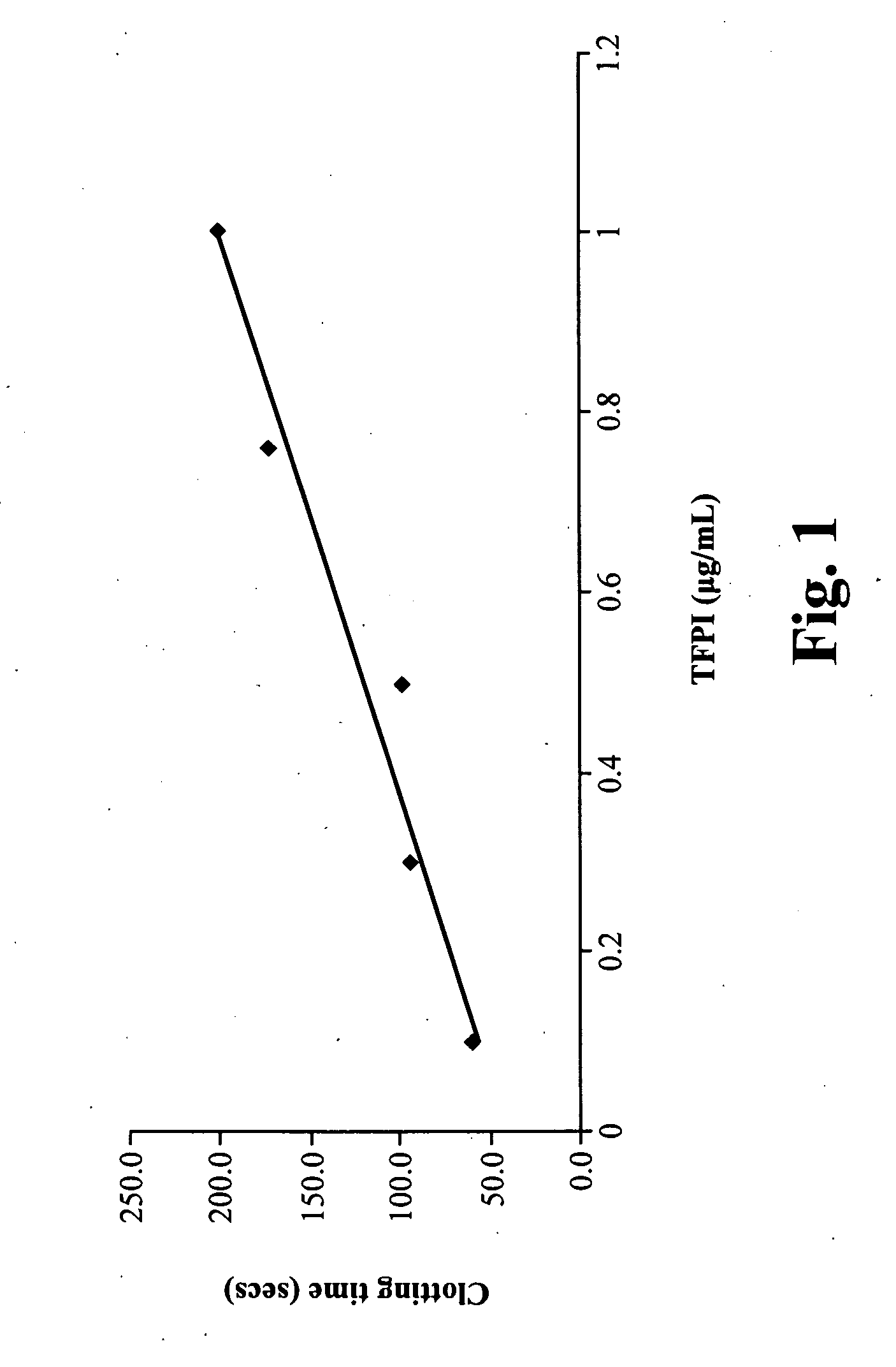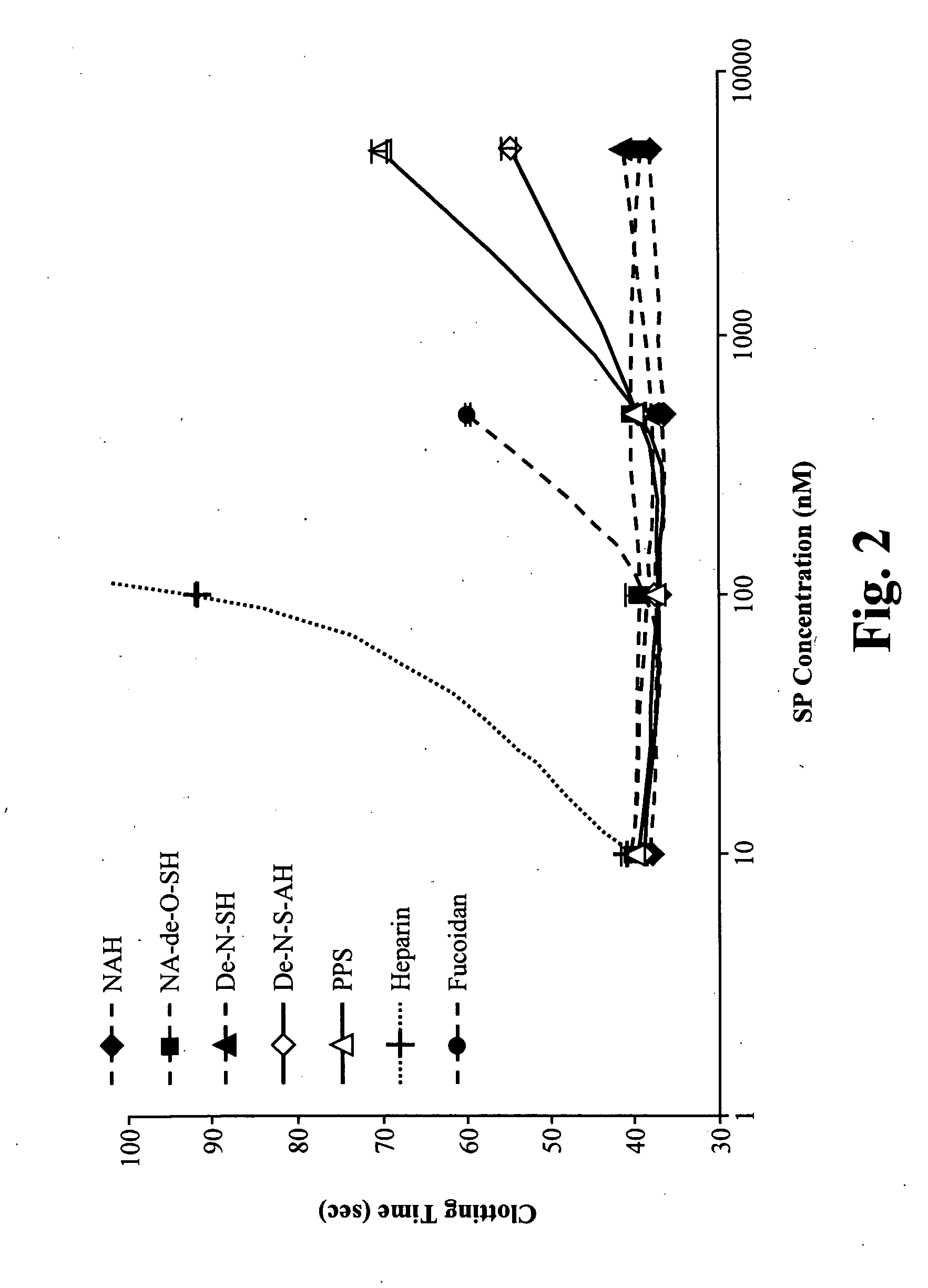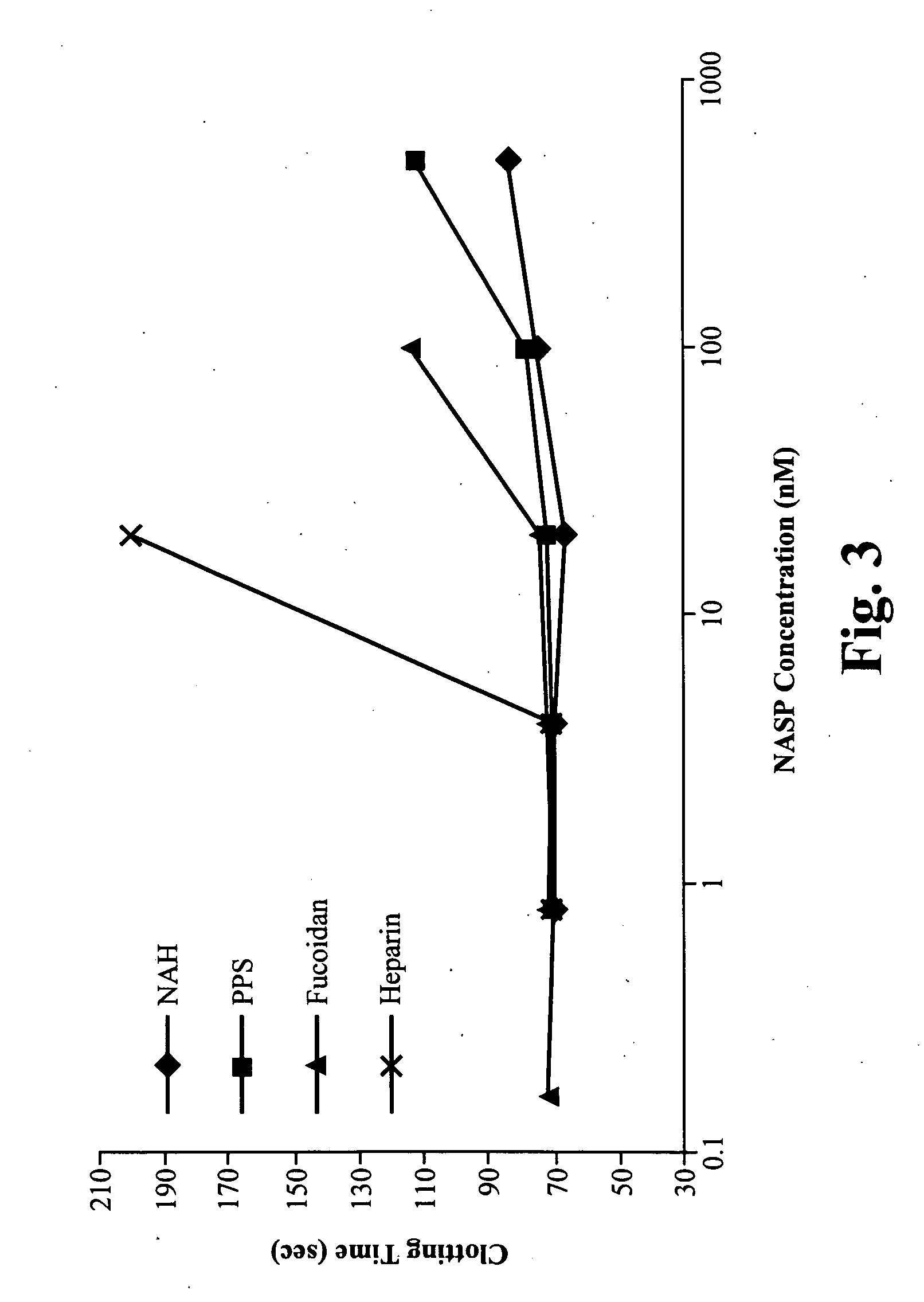Methods for treating bleeding disorders using sulfated polysaccharides
a sulfated polysaccharide and blood clotting technology, applied in the field of blood clotting disorders, can solve the problems of local bleeding, inconvenient intravenous administration, and inability to always work, and achieve the effect of reducing blood clotting tim
- Summary
- Abstract
- Description
- Claims
- Application Information
AI Technical Summary
Benefits of technology
Problems solved by technology
Method used
Image
Examples
example 1
Material and Methods
A. Reagents
[0105]Heparin and modified heparins, and fucoidan were purchased from Sigma (St. Louis, Mo.). The source of pentosan polysulfate sodium (PPS) was the prescription drug Elmiron obtained from Ortho-McNeil Pharmaceuticals (Raritan, N.J.). Human plasmas were obtained from George King Biomedical (Overland Park, Kans.). Factors VIIa and human recombinant TFPI were from American Diagnostica (Stamford, Conn.) and Factor VIII was prescription ReFacto® obtained from Wyeth Pharmaceuticals (Madison, N.J.). SIMPLASTIN EXCEL and APTT reagent were obtained from bioMerieux (Durham, N.C.) or Organon Teknika (Roseland, N.J.).
B. Animals.
[0106]Hem-A mice (homozygous for the exon 16 FVIII KO allele) were licensed from John Hopkins University, and Hem-B mice (homozygous for the exon 1-3 FIX KO) were licensed from University of North Carolina at Chapel Hill. All animal procedures were performed according to “Guide for the Care and Use of Laboratory Animals” (National Researc...
example 2
TFPI Increases Clotting Time in dPT Assay
[0118]The following experiments were performed to demonstrate that TFPI increases clotting time in the dPT assay and to determine a TFPI concentration for use in subsequent NASP experiments. A 100 μg / mL TFPI stock solution (American Diagnostica, Stamford, Conn.) was sequentially diluted in saline to generate TFPI solutions at the following concentrations: 20, 15, 10, 6, and 2 μg / mL. 5 μl of these TFPI dilutions were mixed with 95 μl of FVIII deficient plasma and incubated at room temperature for 30 minutes. dPT assays were performed as follows: SIMPLASTIN thromboplastin was diluted 1:100 in saline and prewarmed to 37° C. 25 mM CaCl2 and 100 μl of test plasma containing TFPI was prewarmed to 37° C. 100 μl SIMPLASTIN thromboplastin and 100 μl of CaCl2 were mixed and clotting time was measured using a BBL fibrometer. The results are summarized in Table 1.
TABLE 1Clotting Times in Presence of TFPITFPI concentration in plasmaClotting time(μg / mL)(se...
example 3
Screening for NASPs
[0120]Sulfated polysaccharide compounds, including modified heparins, pentosan polysulfate, and fucoidan were tested for anti-coagulant activity and compared to heparin to determine whether they qualified as “non-anticoagulants.” The compounds tested are listed in Table 2.
TABLE 2NASPs Tested for Anti-Coagulant ActivityNASPCompany / Cat. #MW (kd)N-Acetyl-HeparinSigma Chem. Co.18(NAH)A8036N-Acetyl-de-O-Sigma Chem. Co.18Sulfated-HeparinA6039(NA-de-o-SH)De-N-Sulfated-Sigma Chem. Co.18Heparin (De-NSH)D4776De-N-Sulfated-Sigma Chem. Co.18Acetylated-HeparinD9808(De-NSAH)PentosanIvax5PolysulphatePharmaceuticals,Sodium (PPS)Inc.NDC 17314-9300-1FucoidanSigma Chem. Co.100F5631Sodium HeparinSigma Chem. Co.18H4784
[0121]Test compounds were diluted to 100 μM, 10 μM, 2 μM and 200 nM. For each test compound, 12.5 μl of a diluted solution containing the test compound was added to 237.5 μl of Hem-A plasma and incubated at room temperature. 100 μl of plasma containing the test compound ...
PUM
| Property | Measurement | Unit |
|---|---|---|
| molecular weight | aaaaa | aaaaa |
| MW | aaaaa | aaaaa |
| molecular weights | aaaaa | aaaaa |
Abstract
Description
Claims
Application Information
 Login to View More
Login to View More - R&D
- Intellectual Property
- Life Sciences
- Materials
- Tech Scout
- Unparalleled Data Quality
- Higher Quality Content
- 60% Fewer Hallucinations
Browse by: Latest US Patents, China's latest patents, Technical Efficacy Thesaurus, Application Domain, Technology Topic, Popular Technical Reports.
© 2025 PatSnap. All rights reserved.Legal|Privacy policy|Modern Slavery Act Transparency Statement|Sitemap|About US| Contact US: help@patsnap.com



